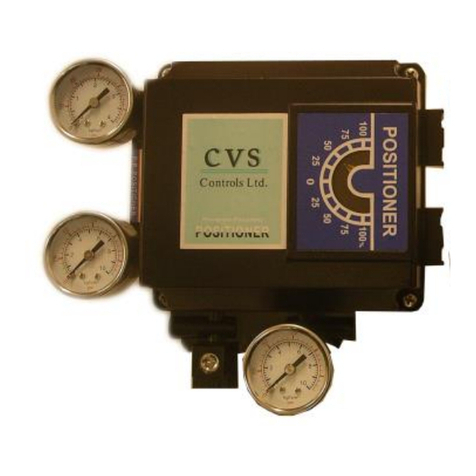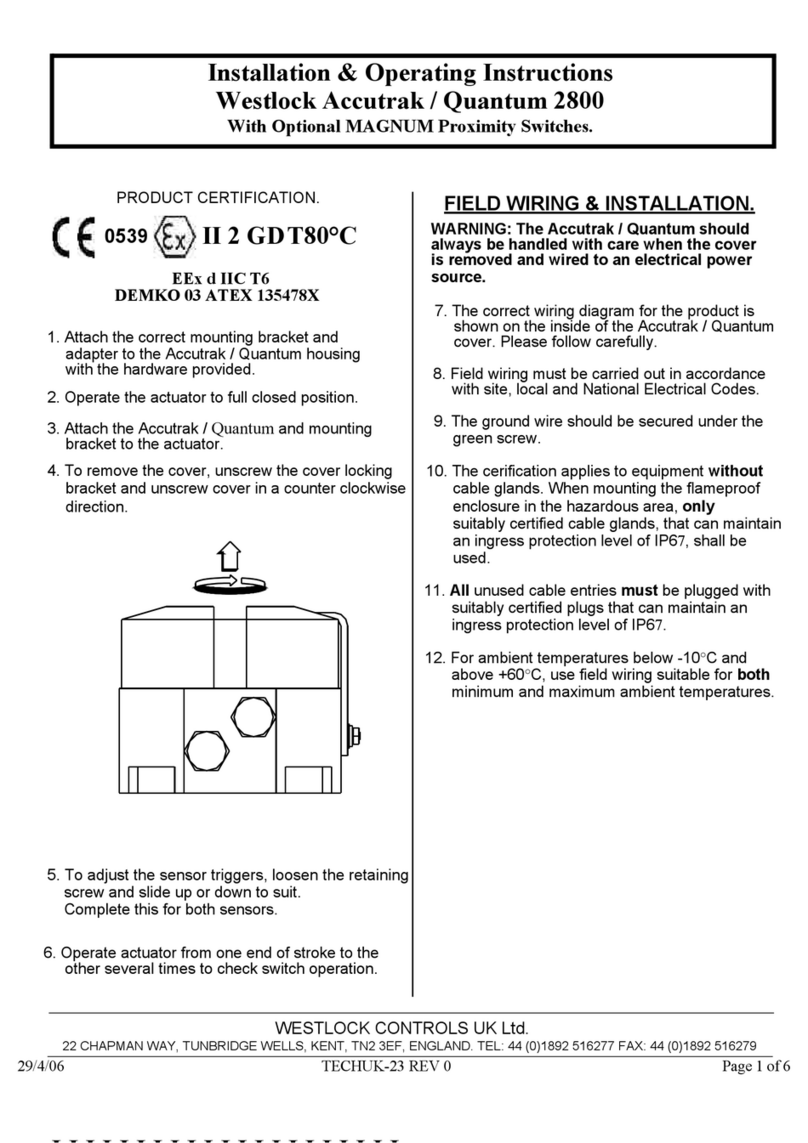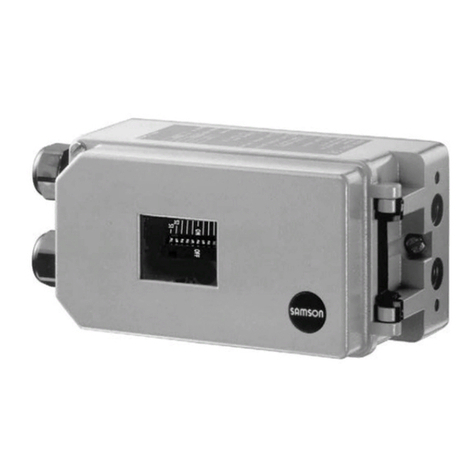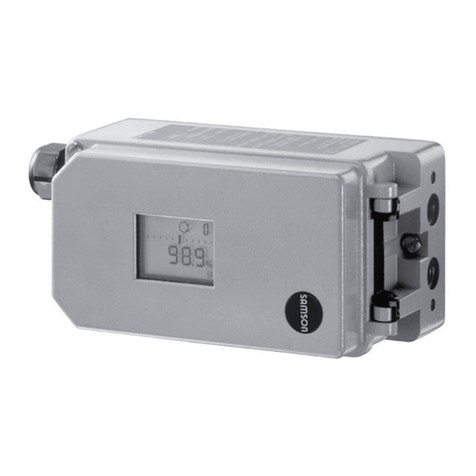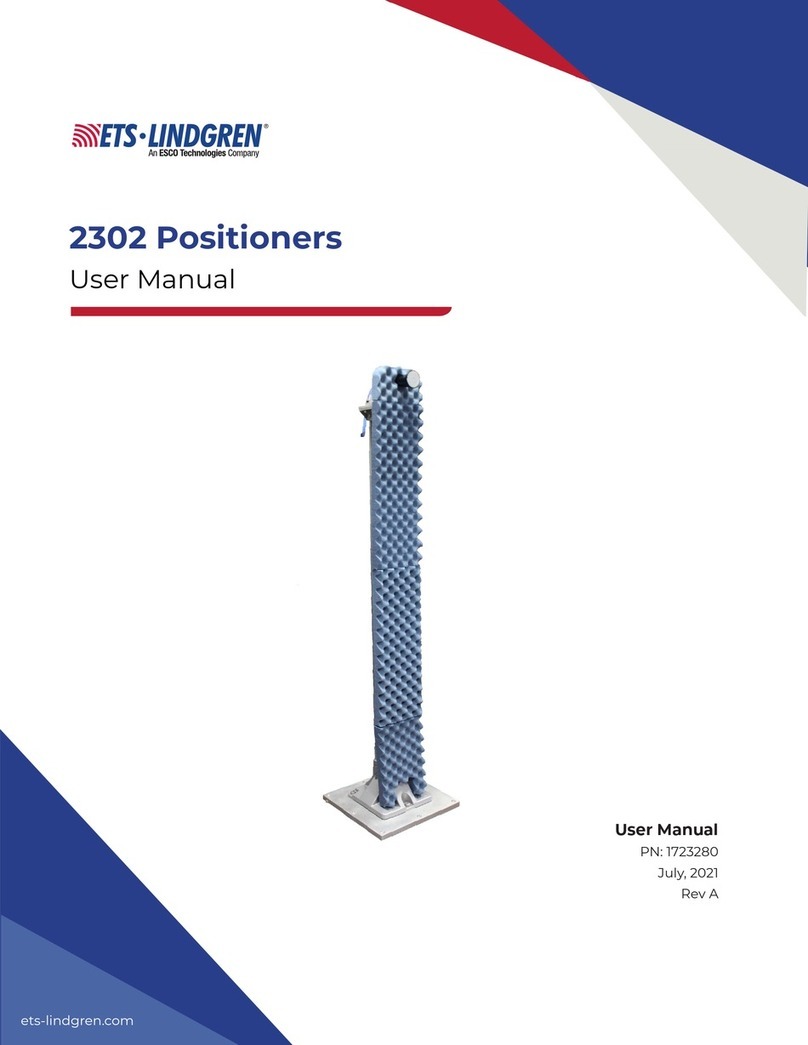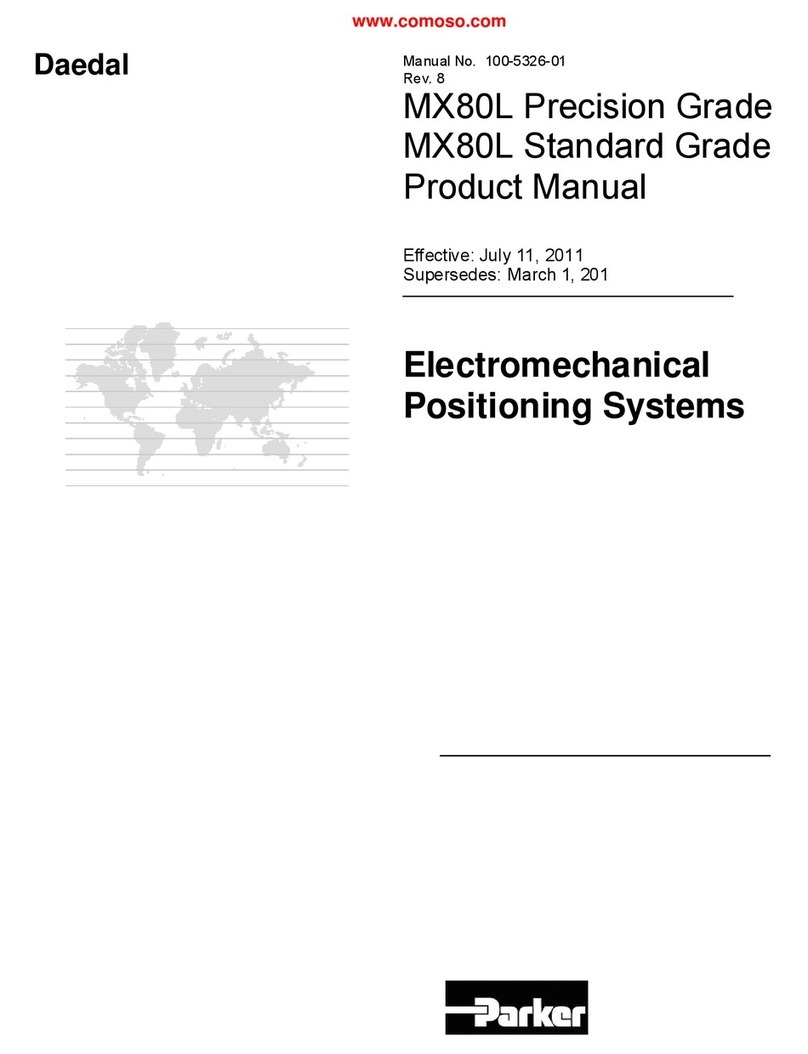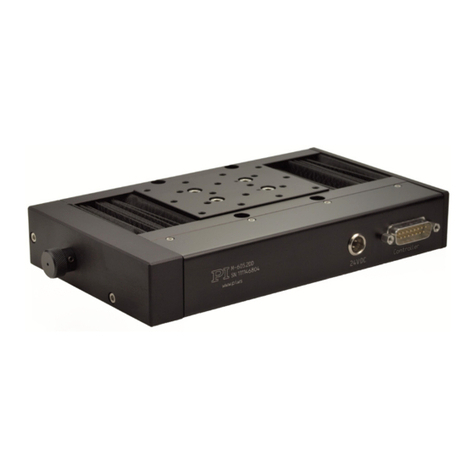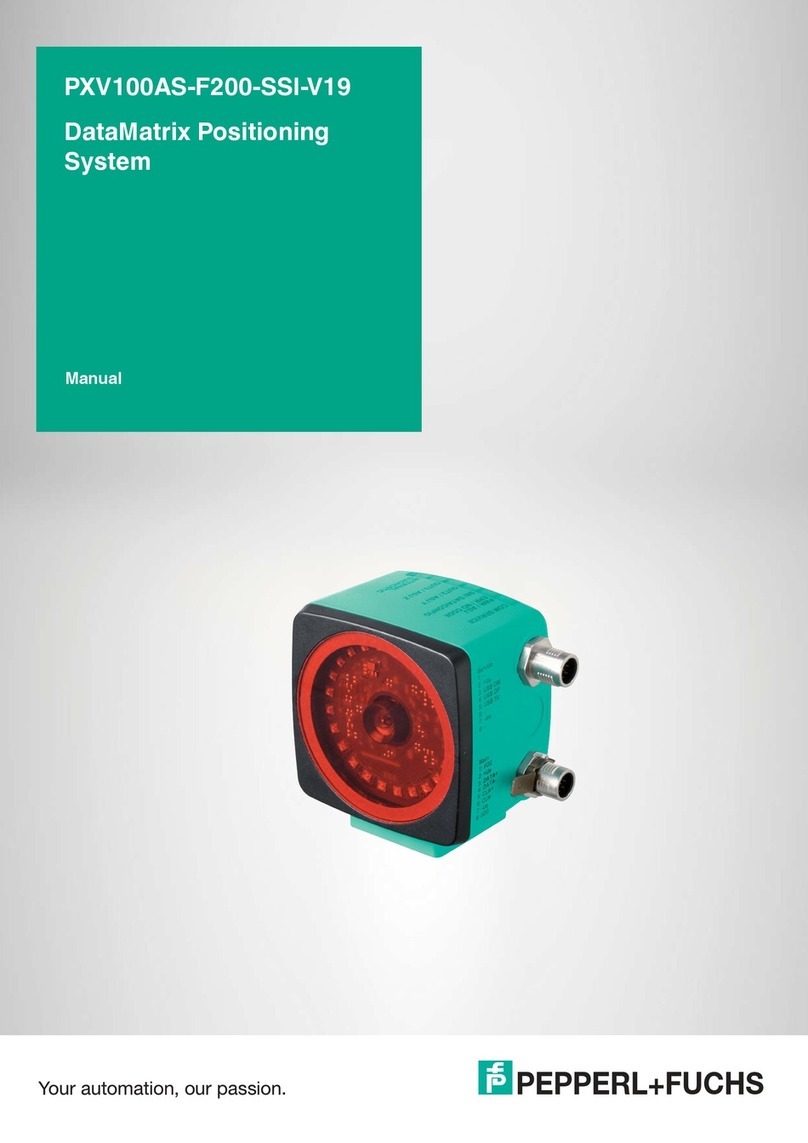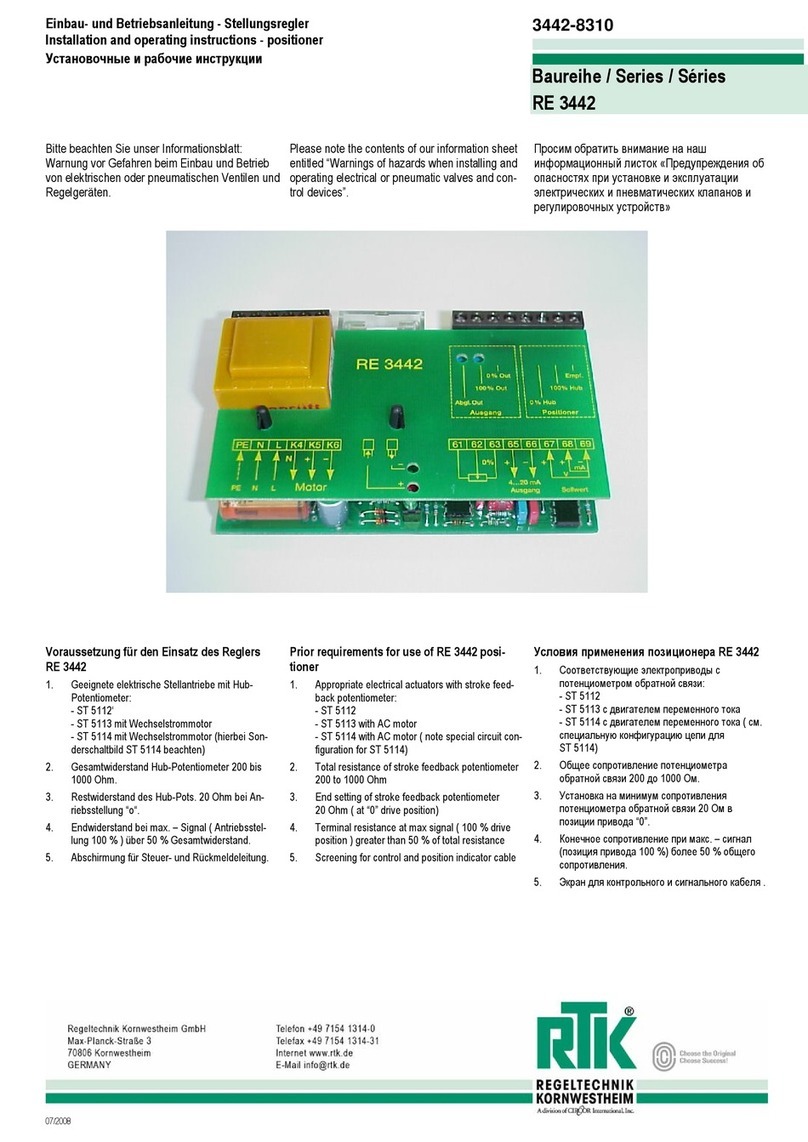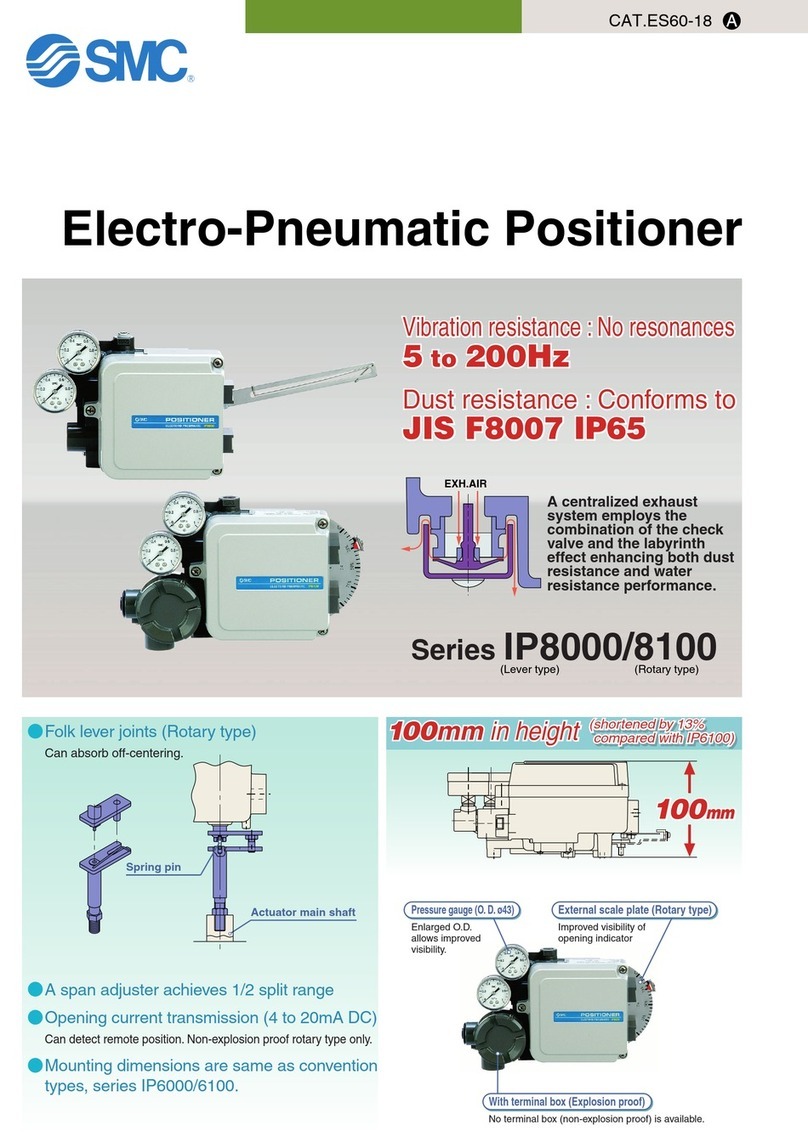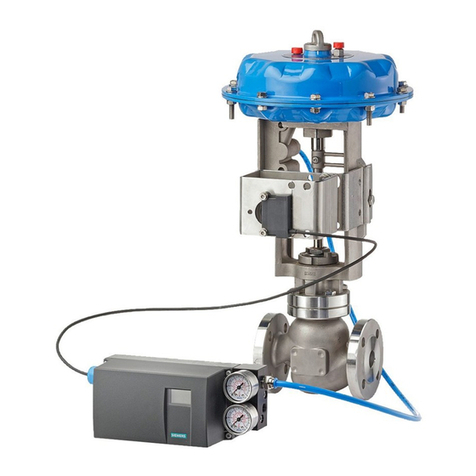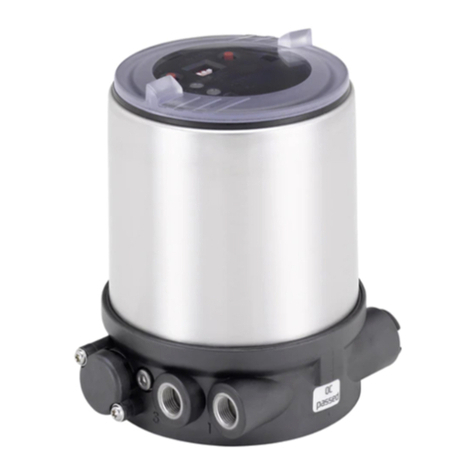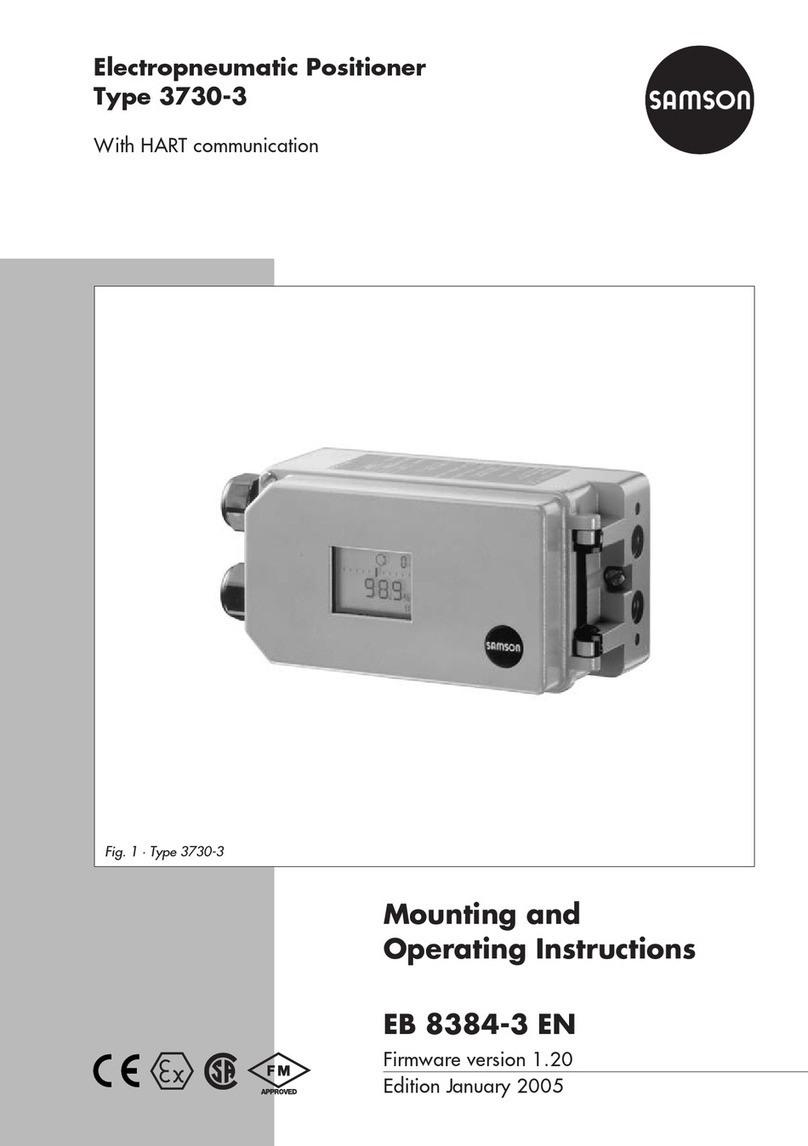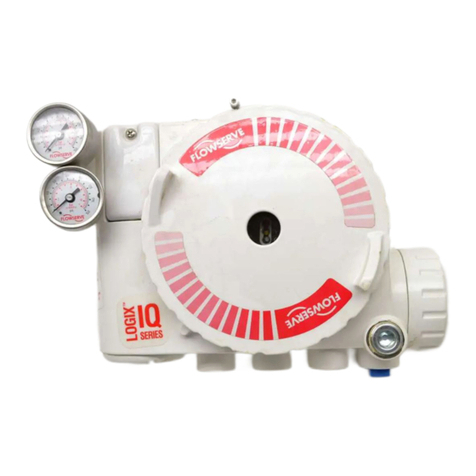negative sign (minus) is equal to 1. Therefore by writing -45690 the position will be encreased or decreased
of 0.45690 to each impulse of the encoder on the display. By writing 45690 the position will be encreased or
decreased of 0.45690 to each impulse of the encoder on the display
13 alue of reset, from -99999 up to 99999, where the position of the axis is immediately sett
when operating the relative input.
14 Decimal point position: by setting 0 = reading without decimal 1= one decimal 2= two decimals
3= three decimals.
15 alue of time, in tenths of second, that pass or among the end of positioning and the controll of
position reached, in the limits of tolerance, or in occasion of reversing movement.
16 Option of positioning.
0 If the position request is in the limits of tolerance it is positioned.
1 If the position request is in the limits of tolerance it is not positione.
0 Spending from fast to slow it stays the value of the change speed and it
then takes back slow.
1 Spending from fast to slow it doesn’t stay the value of the cange speed
but commutes only relais.
0 It doesn’t come effected the calculus of the inertia.
1 It comes effected the calculus and the relative adjournment of the inertia.
0 At the end of each positioning comes visualized the position really reached.
1 At the end of each positioning, comes visualized the in demand position, if
this is in the limits of the tolerance.
PROGRAMMING
By pressing button PROGRAMMING, the led on it will light up as well as the display of programs, showing
the first empty program at disposal.
Confirm with ENTER, in order to write in the proposed program or insert the number of the program to write
or read again by using the numerical buttons , then press button ENTER If the recalled program is empty,
the led on button PROGRAMMING starts flashing, showing you are in writing mode; the displays of position
will show a flashing 00000 for axis Y , thus showing that it is waiting to receive some data and 0 for axis X,
showing that the axis is waiting for being selected. The display of cycles will show 1.
In order to write a series of positions and of possible relative repetitions, max. 99 for each cycle, select the
desired axis by means of the relative button, thus making its led flashing, write the desired position by using
numerical buttons. When making a mistake, press C to cancel the content of the display, that will show again
00000. Once the correct value has been written, select the other axis if You want to write or deselect it by
means of the relative button, thus making the led switch off; confirm with ENTER to pass to the following
cycle or with button INSERT REPETITIONS if You want to pair some repetitions to that cycle.
In this case this value will appear on both the displays if both axis have been previously written or only on
the previously written axis and this number shows the number of repetitions, confirm with ENTER or write the
desired number of repetitions and then confirm with ENTER. Positions displays will be set again on zero and
the display of cycles will show 02, so it will be possible to program the following cycle by repeating the above
mentioned procedure and so on.
Once the last cycle has been written and confirmed with ENTER, by pressing button PROGRAMMING, it's
possible to exit writing operation and visualization will start again from the first written cycle and it will be
posible to read again the program by pressing button ENTER,that shows only the position, or button INSERT
REPETITIONS , that allows the visualization of repetitions or by pressing button STOP the visualization will
show the first empty program at disposal, thus permitting the reading or writing of another program, or by
pressing again STOP button PRG 920 exits programming procedure , returning in manual mode.
If the recalled program contains some data , the led on button
PROGRAMMING will remain on but with fix light and on the position display of the relative axis will appear the
position which makes up the first cycle; the cycle display will show 1.By pressing again ENTER the
visualization will show the second cycle and so on, by showing again the first one, after having visualized the
last cycle of a program. Pressing button INSERT REPETITIONS insted of ENTER , the previous effect is
obtained with the difference that after position, also the repetitions will be visualized.
It's also possible to correct programs already written.
To make corrections, position on the cycle and then on the data to be corrected, then press button
PROGRAMMING, correct the data and confirm with ENTER.
4
